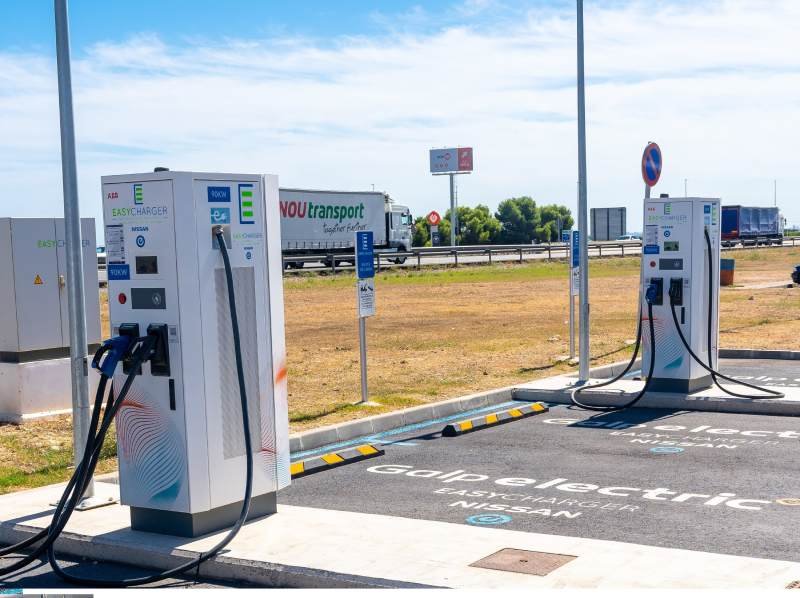
EV Charging at Service Stations
Future-Proof Your Service Station with EV Charging
As electric vehicles become more popular, service stations need to adapt by offering fast EV charging. This not only meets growing customer demand but also creates new revenue opportunities and longer visits. With council requirements for fast chargers increasing, upgrading your station ensures compliance and positions you as a leader in sustainable transport. Partner with Future Charging Solutions to make the transition seamless and successful.
In many areas, local councils are now requiring the inclusion of fast EV chargers as part of Development Applications (DA) for renovations or new builds, especially in commercial and public spaces. This shift reflects the growing emphasis on sustainable infrastructure and the need to accommodate the increasing number of electric vehicles on the road. By mandating fast chargers, councils aim to ensure that new or renovated facilities are future-proofed and capable of meeting the evolving needs of the community. This also aligns with government goals to reduce emissions and promote greener transportation options.
By incorporating fast chargers as part of their renovation plans, they not only comply with council requirements but also position themselves as key players in the transition to cleaner energy. Fast chargers can attract more EV drivers by significantly reducing charging times, enhancing customer convenience, and increasing foot traffic, which can ultimately lead to a boost in business.
Service stations have long been essential for fueling vehicles, but as electric vehicles (EVs) continue to grow in popularity, they must adapt to remain relevant in the future of transportation.
With more drivers making the switch to electric, service stations have the opportunity to attract a new customer base by adding EV charging stations. This shift not only caters to the needs of modern drivers but also positions service stations as progressive and forward-thinking, ensuring they stay competitive in the evolving automotive landscape.
Integrating EV chargers into service stations offers significant benefits. It creates additional revenue streams through charging fees and can attract longer-stay customers, leading to increased spending on food, beverages, and other amenities while they wait for their vehicle to charge.

At Future Charging, we're dedicated to powering the future with innovative EV charging solutions. Whether you're looking for residential, commercial, or public charging infrastructure, our expert team is here to help. For any enquiries, please feel free to reach out to us.
Key Considerations for Service Stations Adding EV Charging Facilities
When a fuel service station considers adding EV charging stations to their facility, several important factors should be taken into account to ensure a smooth and successful integration.
Charger Type and Speed: Fuel service stations need to evaluate which types of EV chargers best suit their business model. Since these stations are designed for quick stops, installing Ultra-fast chargers is often the most suitable choice.
Location and Layout: he strategic placement of EV chargers is crucial. Chargers should be positioned to ensure they do not interfere with the flow of traditional fuel customers. It’s also essential to allocate adequate space for EV charging bays, making sure they are clearly marked and easy to navigate.
Power Supply and Infrastructure: Installing EV chargers may require upgrading the station’s electrical infrastructure to handle the increased load. Collaborating with energy providers is essential for assessing and implementing upgrades, such as enhancing transformers.
Costs and Incentives: Installing EV chargers represents a significant investment, but financial incentives are often available to offset these costs. Service stations should explore local, state, or federal grants, subsidies, and tax incentives that can make the installation more affordable.
Future-Proofing: As the adoption of electric vehicles continues to rise, fuel service stations should plan for future expansion. Installing extra conduits or wiring during the initial setup can make it easier and more cost-effective to add additional chargers as demand grows.
User Experience and Support: A positive charging experience is key to attracting and retaining EV customers. This includes offering various payment options, maintaining the chargers in good working order, and providing customer support for any issues.
By carefully considering these factors, service stations can successfully integrate EV charging into their operations, attracting a new customer base and positioning themselves as leaders in the transition to electric mobility.



